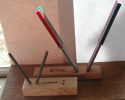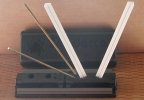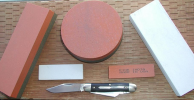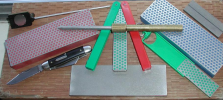Fred Sanford
Gold Member
- Joined
- Sep 3, 2006
- Messages
- 3,141
Usually I sharpen my knives with DMT stones and Spyderco ceramics. This works fine for me for steels like S30V, D2, K390, M4, 440C, etc. I get the impression that 1095 and CV do not like DMT stones.
My experience is that it takes me an awful long time to get 1095, or Case CV sharp if I use DMT and/or ceramics.
I can usually get any of my knives to shaving sharp, in 30 mins or so. Sometimes it takes me over an hour to do the same to 1095 or Case CV. I should mention that I freehand sharpen.
I don't own a regular style "Norton stone" (or similar). I only have DMT and ceramics. At some point I had an old stone but I misplaced it.
--What do you guys use?
--Do you find that carbon steels need sharpened differently?
My experience is that it takes me an awful long time to get 1095, or Case CV sharp if I use DMT and/or ceramics.
I can usually get any of my knives to shaving sharp, in 30 mins or so. Sometimes it takes me over an hour to do the same to 1095 or Case CV. I should mention that I freehand sharpen.
I don't own a regular style "Norton stone" (or similar). I only have DMT and ceramics. At some point I had an old stone but I misplaced it.
--What do you guys use?
--Do you find that carbon steels need sharpened differently?
Last edited:






